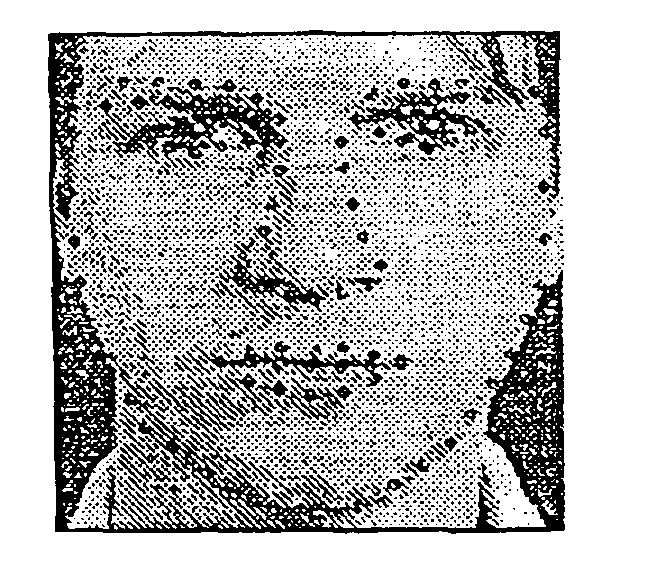Face sub-space determination
a sub-space and facial technology, applied in the direction of testing/monitoring control systems, program control, instruments, etc., can solve the problem of not being able to linearly separate the different sub-spaces, and achieve the effect of improving identity recognition
- Summary
- Abstract
- Description
- Claims
- Application Information
AI Technical Summary
Benefits of technology
Problems solved by technology
Method used
Image
Examples
Embodiment Construction
Facial coding requires the approximation of a manifold, or high dimensional surface, on which any face can be said to lie. This allows accurate coding, recognition and reproduction of previously unseen examples. A number of previous studies [N. P. Costen, I. G. Craw, G. J. Robertson, and S. Akamatsu. Automatic face recognition: What representation? European Conference on Computer Vision, vol 1, pages 504-513, 1996; G. J. Edwards, A. Lanitis, C. J. Taylor, and T. F. Cootes. Modelling the variability in face images. 2nd Face and Gesture, pages 328-333, 1996; N. P. Costen, I. G. Craw, T. Kato, G. Robertson, and S. Akamatsu. Manifold caricatures: On the psychological consistency of computer face recognition. 2nd Face and Gesture, pages 4-10, 1996.] have suggested that using a shape-free coding provides a ready means of doing this, at least when the range of pose-angle is relatively small, perhaps ±20° [T. Poggio and D. Beymer. Learning networks for face analysis and synthesis. Face and ...
PUM
 Login to View More
Login to View More Abstract
Description
Claims
Application Information
 Login to View More
Login to View More - R&D
- Intellectual Property
- Life Sciences
- Materials
- Tech Scout
- Unparalleled Data Quality
- Higher Quality Content
- 60% Fewer Hallucinations
Browse by: Latest US Patents, China's latest patents, Technical Efficacy Thesaurus, Application Domain, Technology Topic, Popular Technical Reports.
© 2025 PatSnap. All rights reserved.Legal|Privacy policy|Modern Slavery Act Transparency Statement|Sitemap|About US| Contact US: help@patsnap.com



